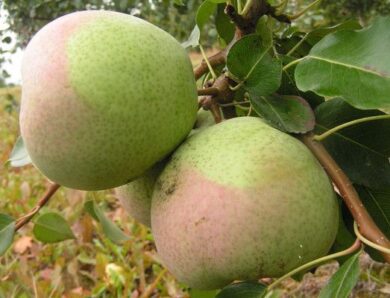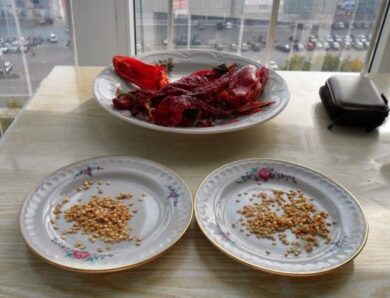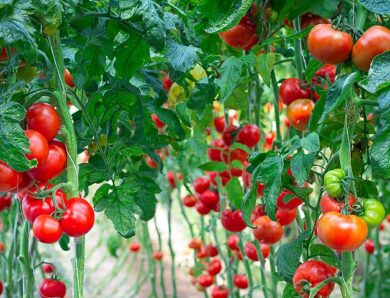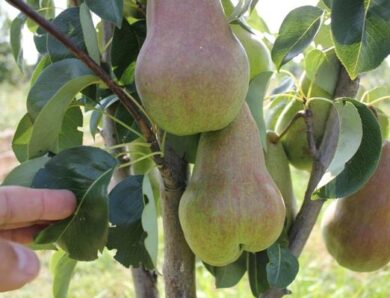Varieties of cucumbers for open ground: review and description
If you are an avid gardener, then you are probably familiar with the spring excitement in anticipation of the upcoming harvest and autumn disappointment, when something failed. If the cause of failure is not in the mistakes of agricultural technology, you should replace the seeds with the best varieties of cucumbers for open ground.
Variety or hybrid - whichever is better?
Nowadays, the varietal diversity of cucumbers is so great, allowing you to make just the perfect choice, suitable for even the most difficult conditions of your site and limited care. But it is impossible to get to the point without careful preparation. Store shelves are full of packaging with the names of the most famous high-yielding varieties and novelties, the vast majority of which are hybrids. So, on what to stop the choice?
The variety is characterized by a stable ability to inherit their characteristics and properties. That is, varietal cucumbers allow you to harvest seeds and grow your favorite plants for many years. With hybrids everything is different. Plant, which has those wonderful characteristics, that indicated on the package can be grown once. Seed, collected from the grown fruits at the subsequent cultivation will spend plants with absolutely other qualities. They may be low yields, barren or outstanding, which is unlikely. The result is difficult to predict. Seeds of F1 hybrids do not retain the properties of the parent plant.
The ability of hybrids to significantly exceed the original varieties (often not the most outstanding) for all parameters, called heterosis, which translated from Greek means change. F1 hybrids have increased immunity to diseases and pests, successfully bear fruit in the most adverse conditions, moreover, the fruits from the lower hands to the crown have the same size.
The only way to grow your favorite F1 hybrid is to buy seeds every year, the price of which is much higher, than on seeds of high-quality cucumbers.
Selecting parent pairs for a hybrid is very painstaking work, which takes many years. Therefore, breeders keep secret the original varieties, maintaining the uniqueness of the resulting hybrid and protecting against copying. Pollination of parental forms is carried out almost manually, what, of course, affects the cost of seeds. The F1 group has several hundred names and is constantly updated.
Consider the most popular and high-yielding hybrid varieties:
- Herman F1 - a hybrid of the famous Dutch company Monsanto. Self-pollinating with good stress resistance. The growth of the main stem is limited by the fruit brush. Not susceptible to cucumber mosaic virus infection, cladosporiosis, powdery mildew;
- Cupid F1 will delight with fruit through 37-40 days after emergence. The bush is vigorous, indeterminate type. The fruits weigh about 100 m, in length grow to 15 cm, pubescent with frequent white spines. The variety is protected from root rot.
- Prestige F1 allowed to the State Register of Russia for cultivation in the Central Chernozem region and Western Siberia. Growth and formation of branches are average. Flowers, mostly females grow in groups 3-4 pieces. The fruits are dark green with a white top weigh 65-90 grams. Not prone to overgrowth. They have excellent taste.
- The boy with a finger F1 differs in average branching of a bush and unlimited growth of the main shoot (indeterminacy). The fruits are small, gherkin type with numerous small bumps and soft white spines. It bears abundant fruit in the closed ground, and in open beds, and indoors.
Domestic and foreign breeding farms are constantly working on breeding new hybrid forms, trying to anticipate growing customer demand. This year we are offered such novelties:
- To everyone's envy, F1 forms more 6 ovaries in a bundle. Self-pollinating with excellent salting characteristics. Successfully bears fruit in low light;
- General F1 is highly productive even among hybrids. In one node is formed by 12 fruits. Shade-resistant and cold-resistant, which allows you to significantly extend the fruiting period. Genetically immune to almost all diseases. Gastronomic qualities are very high. Suitable for conservation. Can be grown in Siberia.
Hybrids of the first generation F1 with minimal care give consistently high yields, susceptible to disease, withstand difficult climatic conditions, forgive the flaws of agricultural technology, have excellent taste and salting qualities. Not wonderful, that the choice of modern gardeners stops at them. Hybrids can only disappoint, if instead of the original seed you bought a fake. Therefore, you need to buy seeds in specialty stores, packaged in branded packages of well-known manufacturers with a proven reputation.
Video "Best varieties"
In the video you will learn about the best cucumber seeds.
Varieties of varieties
Unfamiliar words and incomprehensible characteristics are often present in the description of varieties. In order not to make a mistake with the choice, you need to understand what benefits can bring these or those features.
In terms of fruit ripening, varieties and hybrids of cucumbers for open ground are divided into three groups:
- early varieties, reach on 32-40 the day after emergence;
- medium-ripe varieties bear fruit through 40-50 days;
- late varieties, reach commodity maturity more than through 50 days.
Early varieties of cucumbers impress with a short period of fruiting, but more prone to disease. Due to the poorly developed root system bear fruit amicably, but not for long. Among the early many varieties of salads, unsuitable for salting. Middle and late varieties have high immunity to various infections and high yields.
Early varieties of cucumbers:
- Dynamite F1 enters the fruiting phase through 40-43 days. The bush is not too dense with a high central shoot and medium-sized leaves. Cucumbers are a little bigger 10 cm, greens with large bumps and brown down. The variety is very productive, from one m2 can be obtained up to 15 kg of products;
- Masha F1 begins to bear fruit 36 days after germination. They are formed in clusters, on 6-7 things. Not bitter, suitable for pickling and marinating. The original seeds are coated and do not require processing before planting.
Medium-ripe varieties:
- Gunnar F1 - Dutch, parthenocarpic, hybrid variety, tall, indeterminate type. Tasting evaluation of taste - 4,9 ball with 5 possible;
- Stork - bee-pollinated variety vigorous (the length of the main shoot 170-220 cm). From sowing seeds to fruiting takes place 49-52 days. Fruits with large bumps and solid black pubescence weigh from 70 to 105 p. Beautiful fresh, for pickling and canning.
Late varieties:
- The F1 tournament is a benchmark for high yields. The main whip grows up 3,5 m. The surface of the fruit is slightly tuberous with sparse light complex spines. Length up to 15 div. Resistant to floury, tolerant to powdery mildew and ascochitosis;
- Phoenix 640 - grade, has not lost popularity with 1993 year. Not prone to infection with true and false powdery mildew. Green fruits, in section triangular, 15 cm in length. Stored under normal conditions 2 weeks without loss of marketable qualities.
According to the method of pollination of the variety can be:
- bee pollinators. This is a classic type of cucumber, involves pollination by bees or bumblebees. For hybrids, with a predominance of female flowers it is necessary to sow the seeds of pollinators, which the manufacturer puts in the bag. Varieties are characterized by the formation of a large number of bracts;
- self-pollinating, the flowers of which fertilize the stigma with their own pollen when exposed to moisture. Able to form seeds;
- parthenocarpic, form fruits without pollination. They do not have seeds.
Bee-pollinated varieties are enviable germination and resistance to adverse environmental factors. They are not inferior, and sometimes overtake self-pollinating varieties in yield. However, given that fact, that the population of these beneficial insects is declining, pollination by bees prolongs the formation of ovaries and during flowering is not always good weather, then the advantages of self-pollinating varieties, as they say, available. The disadvantage of self-pollinating varieties is the poor formation of ovaries in the heat, dry weather. For self-pollination they need at least a drop of dew.
Parthenocarpic forms were originally conceived for growing in greenhouses, but today they are successfully grown in open ground. These varieties are genetically provided with a double set of chromosomes and form fruits due to the growth of fetal and pericarp cells. The fruits of such varieties do not turn yellow, since they do not require seed maturation, retain an attractive green color for a long time, density and freshness.
According to the method of forming whips, cucumbers are divided into determinant and indeterminate. In determinant plants, the growth of the central shoot is limited to the formation of the upper flower brush, after which fruiting occurs on numerous lateral shoots. Indeterminants are characterized by unlimited growth of the main stem and a small number of weak lateral shoots.
Regarding the intended use, cucumbers are divided into salads, salting and universal.
Salad varieties:
- Forward F1 - parthenocarpic, disease resistant, late-ripening variety. Forward cucumbers are smooth, long, with a wonderful sweet and delicate taste;
- White Angel F1 is a parthenocarpic middle variety, ovaries grow in bundles. Ripe fruits have a pale green color. Used fresh.
Salting varieties of delicious cucumbers for open ground:
- Siberian salinity F1 - a new variety, which does not require pollination, ripens in one and a half months after sowing. Small, the size of a little finger crispy cucumbers are ideal for pickling in jars.
- Nizhyn - old bee-pollinated mid-late variety drought-resistant and very productive. Not lost relevance due to the high taste of large-tuberous fruits with black thorns.
- Competitor - a very popular long-haired, yielding variety of medium maturity. Spindle-shaped greens, emerald color usually grow 12 cm in length. The variety is widely zoned in the middle lane and chernozem;
- Eskimos F1 - low-leafed, early-maturing parthenocarpic hybrid. The fruits are cylindrical, dark green with soft whitish stripes, length 8-10 see Universal Use. Cold-resistant, therefore suitable for the difficult climate of Siberia.
How to choose seeds
Starting to choose, know, that part of the work for you has already been done. All varieties are zoned, ie selected taking into account climatic conditions. Varieties of cucumbers, designed for open ground in Ukraine, will not reveal their best qualities in Siberia.
- Initially, the choice is between variety and hybrid. If you prefer to harvest your own seed and do not depend on the store, then choose a variety (Nizhynsky, Competitor, Source, Doll, Phoenix 640). This must be taken into account, that different varieties need to be grown away from each other, to prevent re-pollination. If undemanding to care and productivity for you means are more important, spent on the purchase of seeds, choose a hybrid.
- The next choice depends, under what conditions you plan to grow cucumbers in a greenhouse, on the loggia or on the street beds. In the first two cases it is necessary to look closely at parthenocarpic hybrids (Claudia F1, Gunnar F1, Masha F1, Hummingbird F1, Cupid F1). For open ground, the choice is not so simple. It is possible to stop on bee-pollinating hybrids (cannon F1, Athlete F1, Magnet F1, F1 cartel). In this case, it is necessary to check the presence of seeds of pollinating plants in the package (they are distinguished by contrasting colors), which fill the lack of male flowers, for better pollination of hybrids. Self-pollinating hybrids are also a good choice (Matilda F1, Son-in-law F1, Alliance F1, Orpheus F1, To the envy of all F1, Dynamite F1), especially if the forecast promises a rainy summer. And you can not make a choice and plant both. It is better to have your own experience, than to use someone else's advice. And don't forget to experiment with parthenocarpics in the open.
- For winter cultivation in sheltered soil you need to choose shade-tolerant hybrid varieties(Relay F1, Berendei F1 Sarov F1, To the envy of all F1).They are late ripening with broad leaves, which promotes better light absorption.
- We determine the waiting time for the harvest. To get a lot of cucumbers in a short time, pay attention to sprinter hybrids(Mels F1, Anzor F1, All with a beam of F1, Meringue F1). It will take a little over a month to wait. Medium and late varieties will ripen just before the harvest season.
- It's time to figure it out, for what purposes the future harvest will be used. If you are a fan of raw food or just love fresh cucumbers, plant salad varieties (White Angel F1, Annunciation F1, April F1, Bazaar F1, Bukhara F1, Although F1, Forward F1). If the lion's share is intended for winter preparations, choose salting varieties (Nizhynsky, Competitor, RMT F1, Gypsy F1, The very perfection of F1, Farmer F1, Satin F1, Fast and Furious F1). Usually the purpose of the variety is indicated on the package, but still follow, that the thorns of the fruit were black. Gherkins are good for canning (Siberian garland F1, General F1, Beam splendor F1, Hummingbird F1), equally small. Gherkin varieties will be interesting to those, who is in the country infrequently and is engaged in cleaning greens from time to time. Fruits of such varieties do not overgrow.
- For those, who wants to get a big harvest from a small piece of land, indeterminate varieties are suitable(Gunnar F1, Omelko F1), ever-growing stem which can be placed on a high wallpaper or entwined around the gazebo. Determinants do not require too high wallpaper, as well as a permanent garter, stopping growth at a certain point.
And the last, things to keep in mind, that the main criterion when choosing - not a beautiful photo and bright packaging, and seed quality, which can only be guaranteed by a responsible manufacturer with a good reputation. Following these recommendations, you can buy wonderful cucumber seeds, correctly choosing the best varieties for open ground, greenhouses and balconies, for the Yaroslavl region and Siberia.
Video "Growing"
You will learn from the video, how to grow an excellent crop of cucumbers on your site.




